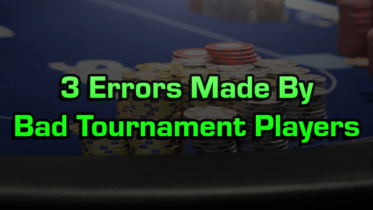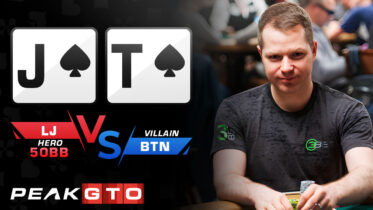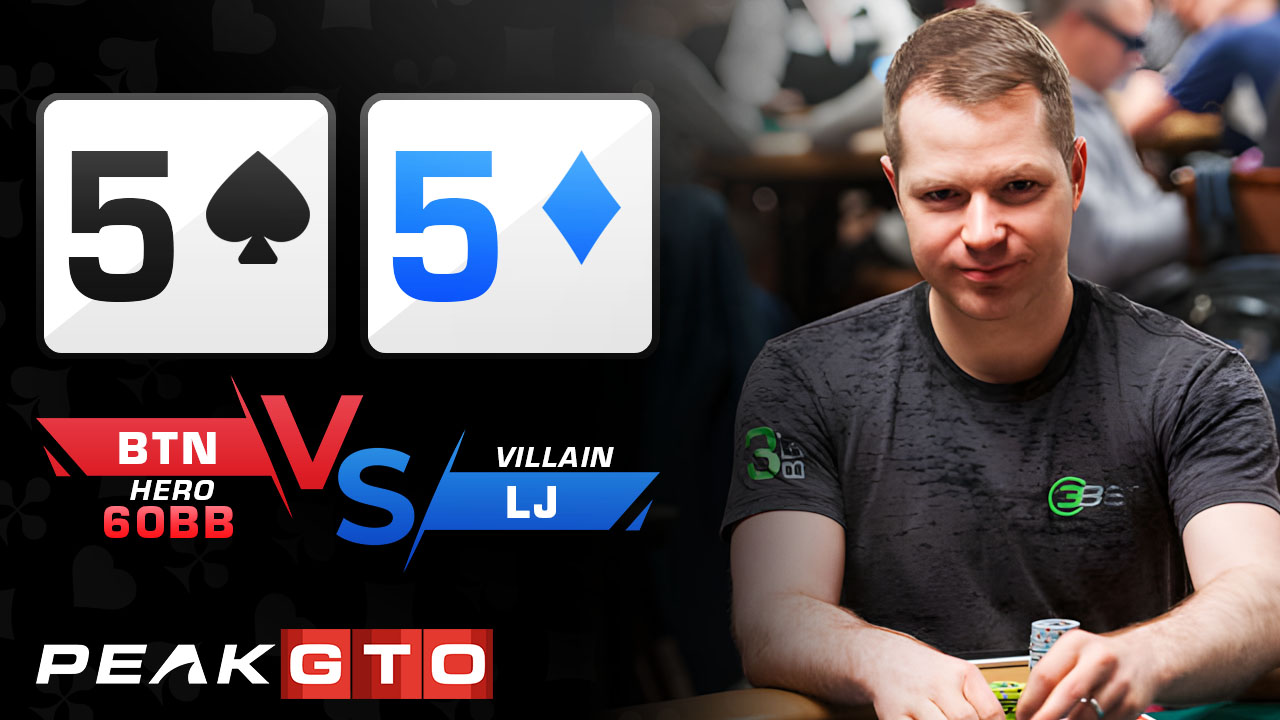In today’s article we are going to discuss three of the typical mistakes I see from weak tournament players. The three mistakes we will discuss are over continuation betting (c-betting) on the flop, playing too passive/not fighting for pots, and hand selection at various stack depths.
Over Continuation Betting
Let’s cut right to the chase, you c-bet too much. You were taught coming up in poker that after you raise pre-flop, you should always continue your “story” of strength with another bet on the flop. This is plain wrong. The reason you get to c-bet is based on a few factors including range advantage, stack depth and board texture. Let’s take three examples and look at the difference in c-betting in them: when you raise UTG and the big blind calls, you raise the button and the big blind calls, and third, you raise the cutoff and the button calls.
Which example will have the highest c-bet frequency across all board textures? Which will have the lowest? When you raise UTG and the big blind calls, this is the highest c-bet percentage spot you will have. Your range advantage is at the greatest in this scenario. The lowest c-bet spot will be when you raise the cutoff and the button calls. You have a very wide range raising from the cutoff, and are facing a wide but much stronger flatting range from the button. You need to respect the position and stronger range and c-bet less in this spot. The middling spot is when you raise the button and the big blind calls. In this spot, you certainly have a range advantage and get to bet a decent frequency, but your range is still extremely wide from the button, upwards of 50% of hands.
The big blind has around 60% of hands, this means you don’t get to c-bet anywhere near 100% because you simply missed the flop a ton also! In general, pick your c-bets for specific reasons because of range advantage or board texture, not simply because you raised pre-flop.

Learn how to crush poker tournaments and cash games with Jonathan Little’s Top Ten Poker Tips!
Playing Too Passively And Not Fighting For Pots
Weak players in tournaments tend to sit back and wait for good hands and not fight for pots. You win poker tournaments by fighting for the blinds and antes and battling for pots that didn’t belong to you. Therefore, you see very aggressive but often seen as spewy players have success in tournaments. They make their mistakes on the aggressive side and when it works in their favor they have big stacks and go deep. Chino Rheem is a great example of this. He does certain things I don’t agree with in his game, but the fact is he builds huge stacks in a very high variance style and his results in big field tournaments shows this.
The nature of payouts in poker tournaments being top heavy encourages aggressive play and “going for it”. Raise more hands pre-flop, three-bet more hands pre-flop, check-raise more, chances are you are not doing these things enough. By doing these more in the correct way, you are increasing your aggression, becoming tougher to play against, and have a better chance of going deep and winning tournaments, not just making the final two tables. Making a passive mistake (calling too much, not bluffing enough) is far worse then making an aggressive mistake (three-betting, raising etc).
Playing Varying Stack Sizes Incorrectly
In tournaments you need to learn to play various stack depths as the tournament progresses. A completely different skill set is required to play a 20-30 big blind stack than a 150 big blind stack early. The best players know how to play all the various stack sizes and make proper adjustments. When playing early in a tournament at 100 big blinds, hands like suited connectors and small pocket pairs go way up in value. These hands require a high stack to pot ratio to realize their equity. Hands like ace-ten offsuit are quite trashy at 100 big blinds. They want the stack to pot ratio to be low because the best hand they can really make is a pair. The opposite holds true at lower stack depths.
With 25 big blinds 8-7 suited is quite a trashy hand, and ace-ten offsuit is a great hand as ace-ten offsuit is likely to make a top pair type hand that can play for stacks with a low stack to pot ratio (SPR). Middle suited connectors, however, are mostly going to flop weak draws and weak pairs which play poorly at a low SPR. In general, high card value trumps suitedness and connectedness as a short stack. When deep stacked, suitedness and connectedness trump high card value.
Take a look at your game and see if you fall into any of these stereotypes. Try to put a focus on correcting these common mistakes and seeing your win-rate rise in tournaments.
Good luck at the tables
Matt




